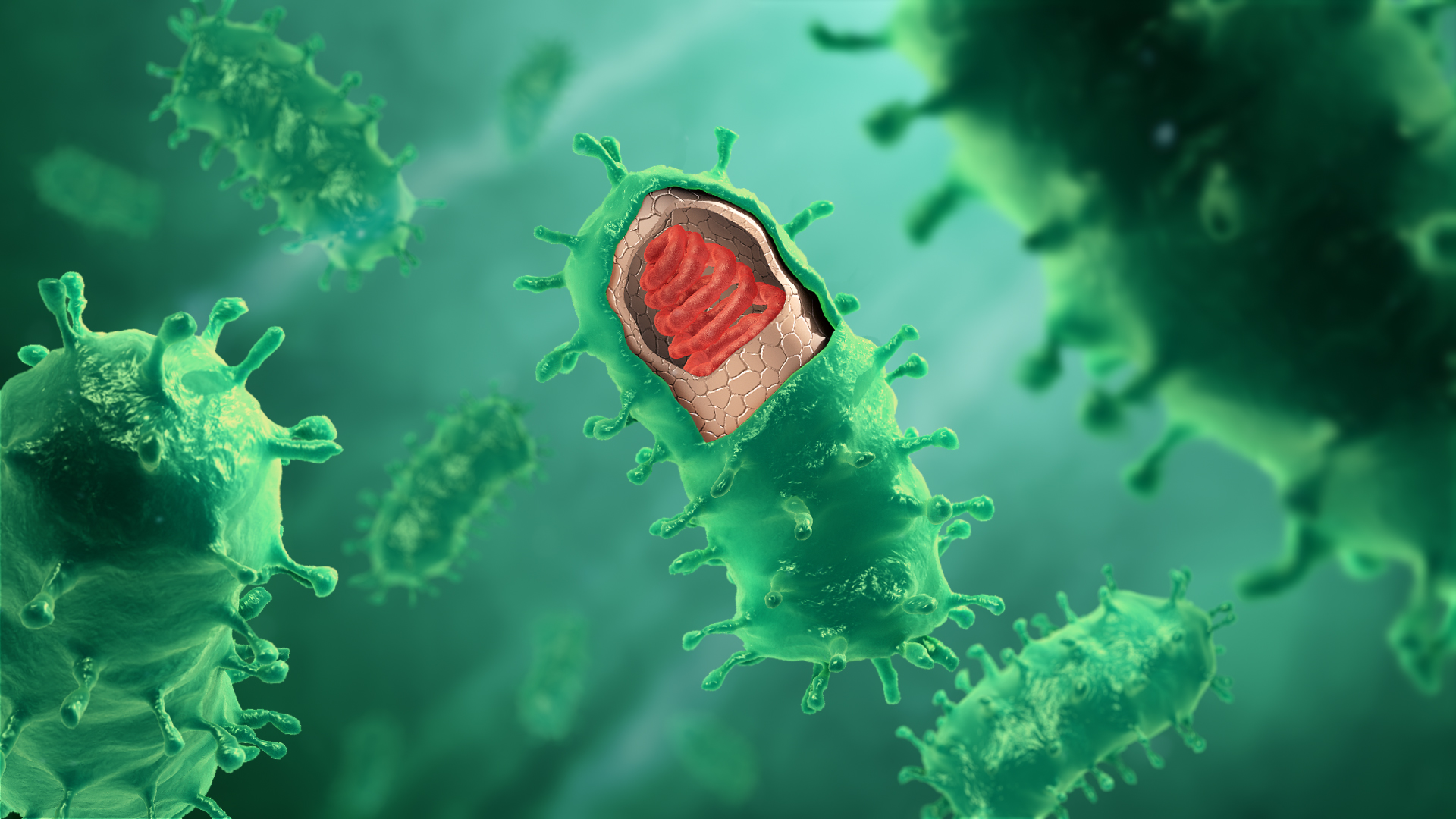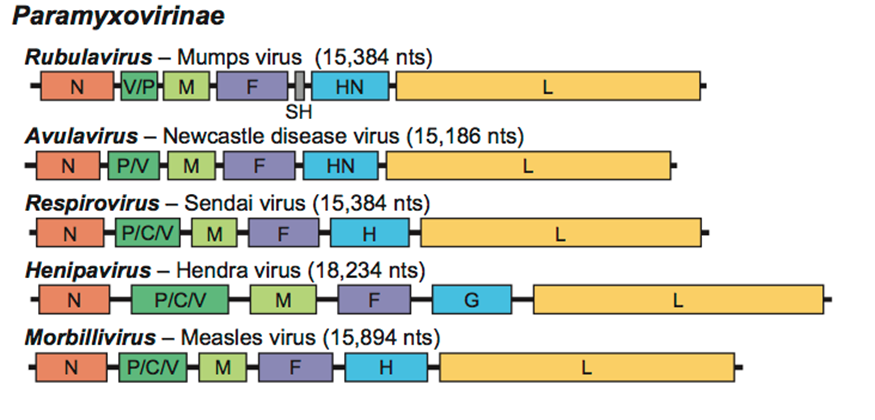|
Slow Virus
A slow virus is a virus, or a viruslike agent, etiologically associated with a slow virus disease. A slow virus disease is a disease that, after an extended period of latency, follows a slow, progressive course spanning months to years, frequently involves the central nervous system, and in most cases progresses to death. Examples of slow virus diseases include HIV/AIDS, caused by the HIV, HIV virus, subacute sclerosing panencephalitis, the rare result of a measles virus infection, and Paget's disease of bone (osteitis deformans), which may be associated with paramyxoviruses, especially the measles virus and the human respiratory syncytial virus. Characteristics Every infectious agent is different, but in general, slow viruses: :* Cause an asymptomatic primary infection :* Have a long incubation period ranging from months to years :* Follow a slow but relentless progressive course leading to death :* Tend to have a genetic predisposition :* Often re-emerge from latency if the host b ... [...More Info...] [...Related Items...] OR: [Wikipedia] [Google] [Baidu] |
Virus
A virus is a submicroscopic infectious agent that replicates only inside the living Cell (biology), cells of an organism. Viruses infect all life forms, from animals and plants to microorganisms, including bacteria and archaea. Viruses are found in almost every ecosystem on Earth and are the most numerous type of biological entity. Since Dmitri Ivanovsky's 1892 article describing a non-bacterial pathogen infecting tobacco plants and the discovery of the tobacco mosaic virus by Martinus Beijerinck in 1898, more than 16,000 of the millions of List of virus species, virus species have been described in detail. The study of viruses is known as virology, a subspeciality of microbiology. When infected, a host cell is often forced to rapidly produce thousands of copies of the original virus. When not inside an infected cell or in the process of infecting a cell, viruses exist in the form of independent viral particles, or ''virions'', consisting of (i) genetic material, i.e., long ... [...More Info...] [...Related Items...] OR: [Wikipedia] [Google] [Baidu] |
Human Polyomavirus 2
Human polyomavirus 2, commonly referred to as the JC virus or John Cunningham virus, is a type of human polyomavirus. It was identified by electron microscopy in 1965 by ZuRhein and Chou, and by Silverman and Rubinstein. It was later isolated in culture and named using the initials of a patient by the name of John Cunningham from whom it was isolated and had developed progressive multifocal leukoencephalopathy (PML). The virus causes leukoencephalopathy and other diseases only in cases of immunodeficiency, as in AIDS or during treatment with immunosuppressive drugs (e.g. in organ transplant patients). Infection and pathogenesis The initial site of infection may be the tonsils, or possibly the gastrointestinal tract. The virus then remains latent in the gastrointestinal tract and can also infect the tubular epithelial cells in the kidneys, where it continues to reproduce, shedding virus particles in the urine. In addition, recent studies suggest that this virus may latently inf ... [...More Info...] [...Related Items...] OR: [Wikipedia] [Google] [Baidu] |
Human Papillomavirus Infection
Human papillomavirus infection (HPV infection) is caused by a DNA virus from the ''Papillomaviridae'' family. Many HPV infections cause no symptoms and 90% resolve spontaneously within two years. In some cases, an HPV infection persists and results in either warts or precancerous lesions. All warts are caused by HPV. These lesions, depending on the site affected, increase the risk of cancer of the cervix, vulva, vagina, penis, anus, mouth, tonsils, or throat. Nearly all cervical cancer is due to HPV, and two strains – HPV16 and HPV18 – account for 70% of all cases. HPV16 is responsible for almost 90% of HPV-positive oropharyngeal cancers. Between 60% and 90% of the other cancers listed above are also linked to HPV. HPV6 and HPV11 are common causes of genital warts and laryngeal papillomatosis. An HPV infection is caused by the ''human papillomavirus'', a DNA virus from the papillomavirus family. Over 200 types have been described. An individual can become infected w ... [...More Info...] [...Related Items...] OR: [Wikipedia] [Google] [Baidu] |
Rabies
Rabies is a viral disease that causes encephalitis in humans and other mammals. It was historically referred to as hydrophobia ("fear of water") because its victims panic when offered liquids to drink. Early symptoms can include fever and abnormal sensations at the site of exposure. These symptoms are followed by one or more of the following symptoms: nausea, vomiting, violent movements, uncontrolled excitement, fear of water, an inability to move parts of the body, confusion, and loss of consciousness. Once symptoms appear, the result is virtually always death. The time period between contracting the disease and the start of symptoms is usually one to three months but can vary from less than one week to more than one year. The time depends on the distance the virus must travel along Peripheral nervous system, peripheral nerves to reach the central nervous system. Rabies is caused by lyssaviruses, including the rabies virus and Australian bat lyssavirus. It is spread when an i ... [...More Info...] [...Related Items...] OR: [Wikipedia] [Google] [Baidu] |
Rhabdoviridae
''Rhabdoviridae'' is a family of negative-strand RNA viruses in the order ''Mononegavirales''. Vertebrates (including mammals and humans), invertebrates, plants, fungi and protozoans serve as natural hosts. Diseases associated with member viruses include Rabies, rabies encephalitis caused by the rabies virus, and flu-like symptoms in humans caused by vesiculoviruses. The name is derived from Ancient Greek , meaning rod, referring to the shape of the viral particles. The family has 62 genera, most assigned to four subfamilies. Structure The individual virus particles (virions) of rhabdoviruses are composed of RNA, protein, carbohydrate and lipid. They have complex bacilliform or bullet-like shapes. All these viruses have structural similarities and have been classified as a single family. The virions are about 75 nm wide and 180 nm long. Rhabdoviruses are Viral envelope, enveloped and have helical Capsid, nucleocapsids and their genomes are linear, around 11–15 kb ... [...More Info...] [...Related Items...] OR: [Wikipedia] [Google] [Baidu] |
Rabies Virus
Rabies virus (''Lyssavirus rabies'') is a neurotropic virus that causes rabies in animals, including humans. It can cause violence, hydrophobia, and fever. Rabies transmission can also occur through the saliva of animals and less commonly through contact with human saliva. Rabies virus, like many Rhabdoviridae, rhabdoviruses, has an extremely wide host range. In the wild it has been found infecting many mammalian species, while in the laboratory it has been found that birds can be infected, as well as cell cultures from mammals, birds, reptiles and insects. Rabies is reported in more than 150 countries and on all continents except Antarctica. The main burden of disease is reported in Asia and Africa, but some cases have been reported also in Europe in the past 10 years, especially in returning travellers. Rabies virus has a cylindrical morphology and is a member of the ''Lyssavirus'' genus of the ''Rhabdoviridae'' family. These viruses are Viral envelope, enveloped and have a Ne ... [...More Info...] [...Related Items...] OR: [Wikipedia] [Google] [Baidu] |
Progressive Rubella Panencephalitis
Progressive rubella panencephalitis (PRP) is a neurological disorder which may occur in a child with congenital rubella. It is a slow viral infection of the brain characterized by chronic encephalitis, usually manifesting between 8–19 years of age. It is believed to be due to a persistence or reactivation of rubella virus infection. Cause It develops 6 months to 4 years after the primary rubella infection, which in most cases is a congenital rubella. In children with congenital rubella infection the deficits remain stable; neurological deterioration after the first few years of life is not believed to occur. Progression of the disease can be divided into two stages: * 1st stage: Behavioural Changes ** insidious onset ** subtle changes in behaviour and declining school work * 2nd stage: Neurological Changes ** seizures – sometimes myoclonic ** cerebellar ataxia ** spastic weakness ** retinopathy, optic atrophy ** frank dementia leading to coma ** spasticity and brainstem involve ... [...More Info...] [...Related Items...] OR: [Wikipedia] [Google] [Baidu] |
Rubella Virus
Rubella virus (RuV) is the pathogenic agent of the disease rubella, transmitted only between humans via the respiratory route, and is the main cause of congenital rubella syndrome when infection occurs during the first weeks of pregnancy. Rubella virus, scientific name ''Rubivirus rubellae'', is a member of the genus '' Rubivirus'' and belongs to the family of ''Matonaviridae'', whose members commonly have a genome of single-stranded RNA of positive polarity which is enclosed by an icosahedral capsid. the molecular basis for the causation of congenital rubella syndrome was not yet completely clear, but ''in vitro'' studies with cell lines showed that rubella virus has an apoptotic effect on certain cell types. There is evidence for a p53-dependent mechanism. Taxonomy Rubella virus (''Rubivirus rubellae'') is assigned to the ''Rubivirus'' genus. ''Matonaviridae'' family Until 2018, Rubiviruses were classified as part of the family ''Togaviridae'', but have since been chan ... [...More Info...] [...Related Items...] OR: [Wikipedia] [Google] [Baidu] |
Subacute Sclerosing Panencephalitis
Subacute sclerosing panencephalitis (SSPE), also known as Dawson disease, is a rare form of progressive brain inflammation caused by a persistent infection with the measles virus. The condition primarily affects children, teens, and young adults. It has been estimated that about 2 in 10,000 people who get measles will eventually develop SSPE. However, a 2016 study estimated that the rate for unvaccinated infants under 15 months was as high as 1 in 609. No cure for SSPE exists, and the condition is almost always fatal. SSPE should not be confused with acute disseminated encephalomyelitis, which can also be caused by the measles virus, but has a very different timing and course. SSPE is caused by the wild-type virus, not by vaccine strains. Signs and symptoms SSPE is characterized by a history of primary measles infection, followed by an asymptomatic period that lasts 7 years on average but can range from 1 month to 27 years. After the asymptomatic period, progressive neurologica ... [...More Info...] [...Related Items...] OR: [Wikipedia] [Google] [Baidu] |
Paramyxoviridae
''Paramyxoviridae'' (from Ancient Greek, Greek ''para-'' “by the side of” and ''myxa'' “mucus”) is a family of negative-strand RNA viruses in the order ''Mononegavirales''. Vertebrates serve as natural hosts. Diseases associated with this family include measles, mumps, and respiratory tract infections. The family has nine subfamilies that contain 23 genera. Structure Virions are enveloped and can be spherical or pleomorphic and capable of producing filamentous virions. The diameter is around 150 nm. Genomes are linear, around 15kb in length. Fusion proteins and attachment proteins appear as spikes on the virion surface. Matrix proteins inside the envelope stabilise virus structure. The nucleocapsid core is composed of the genomic RNA, nucleocapsid proteins, phosphoproteins and polymerase proteins. Genome The genome is non-segmented, negative-sense RNA, 15–19 kilobases in length, and contains six to 10 genes. Extracistronic (noncoding) regions include: * A 3’ ... [...More Info...] [...Related Items...] OR: [Wikipedia] [Google] [Baidu] |
Measles Virus
The measles virus (MV), with scientific name ''Morbillivirus hominis'', is a single-stranded, negative-sense, enveloped, non-segmented RNA virus of the genus ''Morbillivirus'' within the family ''Paramyxoviridae''. It is the cause of measles. Humans are the natural hosts of the virus; no animal reservoirs are known to exist. Disease The virus causes measles, a highly contagious disease transmitted by respiratory aerosols that triggers a temporary but severe immunosuppression. Symptoms include fever, cough, runny nose, inflamed eyes and a generalized, maculopapular, erythematous rash and a pathognomonic Koplik spot seen on buccal mucosa opposite to lower 1st and 2nd molars. The virus is spread by coughing and sneezing via close personal contact or direct contact with secretions. Replication cycle Entry The measles virus has two envelope glycoproteins on the viral surface – hemagglutinin (H) and membrane fusion protein (F). These proteins are responsible for ho ... [...More Info...] [...Related Items...] OR: [Wikipedia] [Google] [Baidu] |






